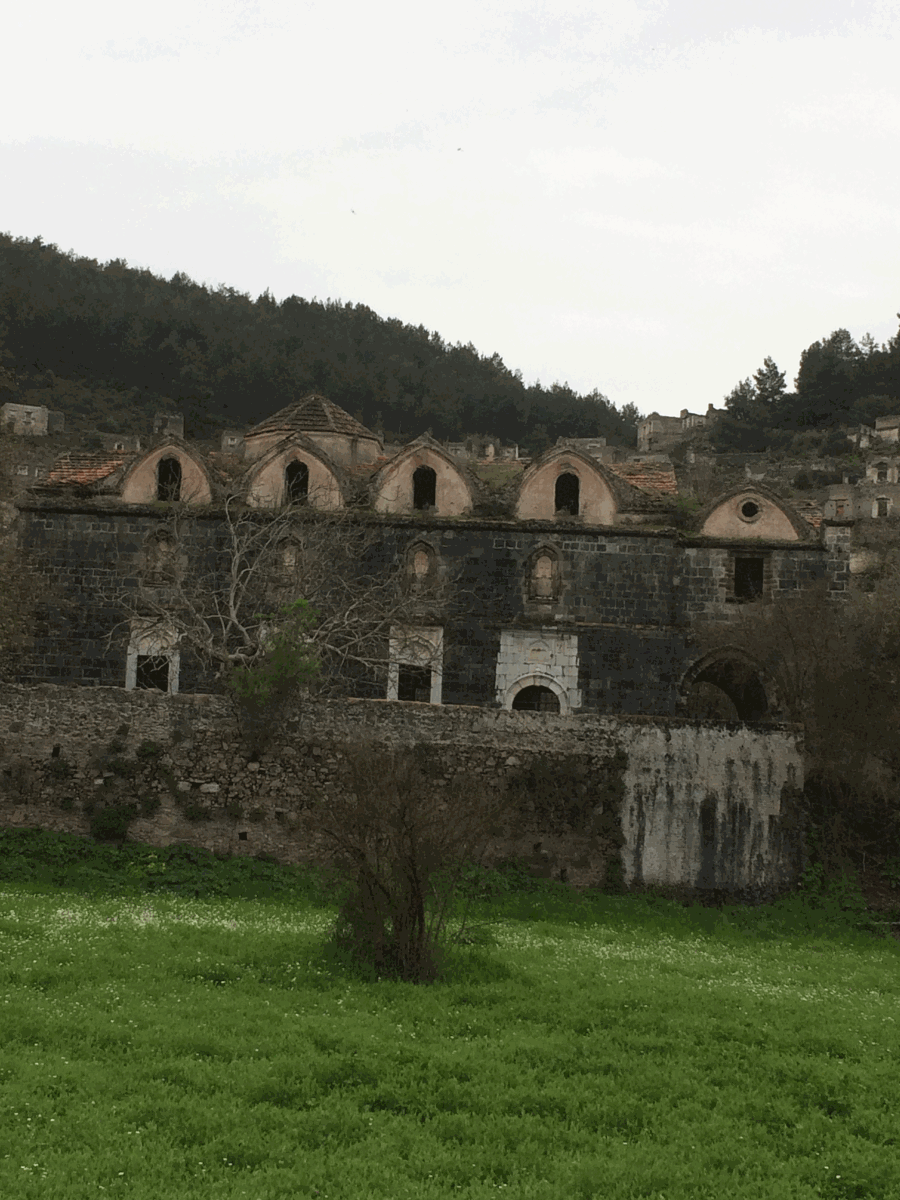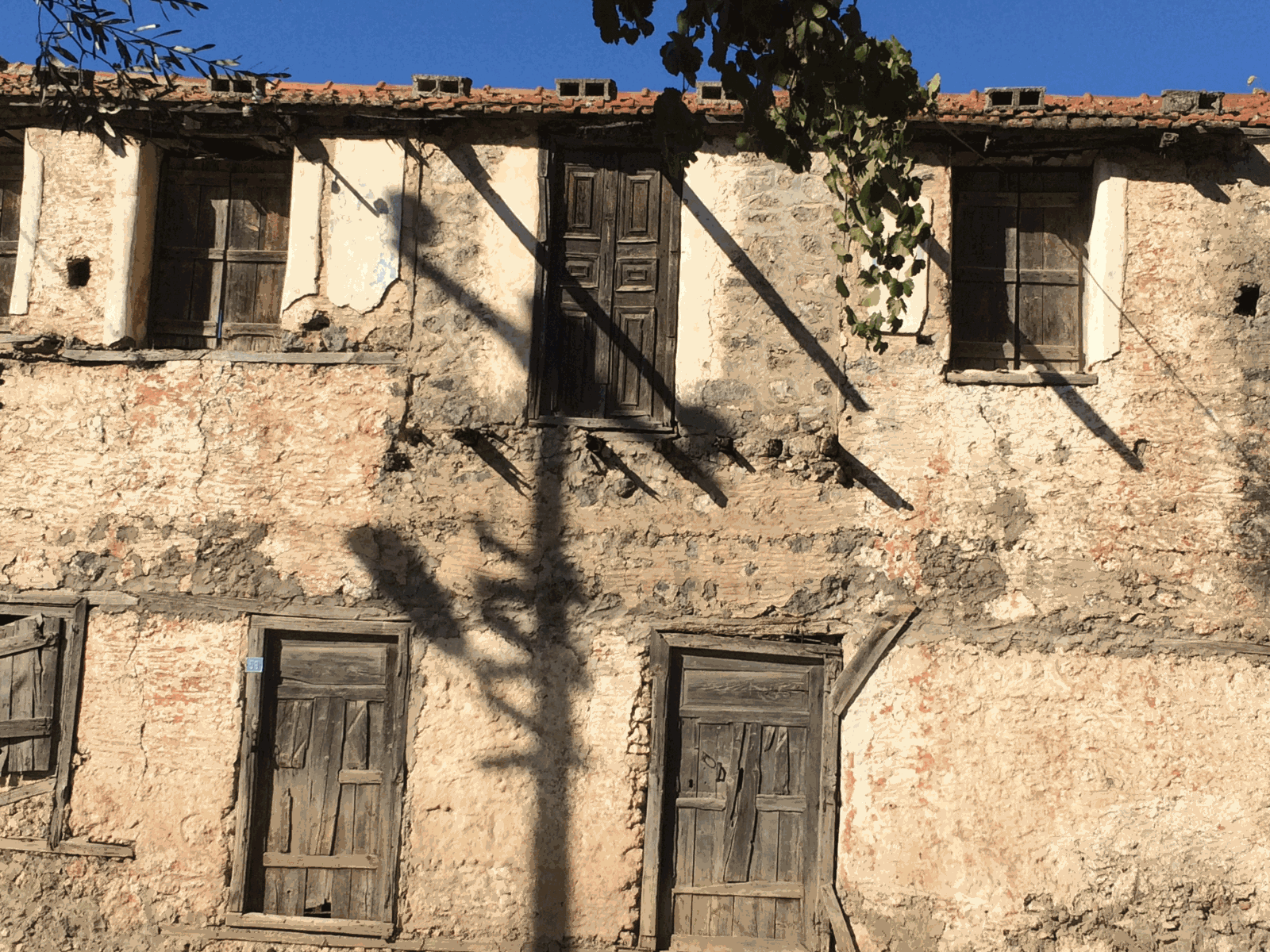General
 Kayakoy (Kayaköy), known in ancient times as Lebessos and Lebessus and later pronounced Livissi is a village 8 km south of Fethiye in south western Turkey, in the old province of Lycia. It has a very rich history - Livissi was built probably in the 18th century on the site of the ancient city of Lebessus, an ancient Lycian town. Lycian tombs can be found in the village and at Gokceburun, north of the village. However, Lebessus is mentioned as a Сhristian bishopric in official documents produced under the Byzantine Emperor, Heraclius, in about 640.
Kayakoy (Kayaköy), known in ancient times as Lebessos and Lebessus and later pronounced Livissi is a village 8 km south of Fethiye in south western Turkey, in the old province of Lycia. It has a very rich history - Livissi was built probably in the 18th century on the site of the ancient city of Lebessus, an ancient Lycian town. Lycian tombs can be found in the village and at Gokceburun, north of the village. However, Lebessus is mentioned as a Сhristian bishopric in official documents produced under the Byzantine Emperor, Heraclius, in about 640.
Livissi is probably the place to where the inhabitants of Byzantine Gemiler island fled, to escape from pirates. It experienced a renewal after nearby Fethiye (known as Makri) was devastated by an earthquake in 1856 and a major fire in 1885. More than 20 churches and chapels were built in the village and the plain (Taxiarhes - the 'Upper' church - and 'Panayia Pyrgiotissa' - the 'lower' church - St. Anna, St. George, etc.). Most of them are still standing in a ruined or semi-ruined condition. The village population reached over 6.000 people, according to Greek and Ottoman sources.
 Its population in 1900 was about 2,000, almost all Greek Orthodox Christians; Anatolian Greeks inhabited the province until approximately 1922 when they relocated to Greece. The townspeople, who were mostly professional craftsmen, were subsequently barred from returning by the 1923 Population exchange between Greece and Turkey.The ghost town, now preserved as a museum village, consists of hundreds of run-down, but still mostly standing, Greek-style houses and churches which cover a small mountainside and serve as a stopping place for tourists visiting Fethiye and nearby Ölüdeniz. The village is now empty except for tour groups and roadside vendors selling handmade goods. However, there is a small number of houses which have been restored, and are currently occupied. Currently the most important economic factor of the place is tourism. It is envisaged that the village will be partially restored.
Its population in 1900 was about 2,000, almost all Greek Orthodox Christians; Anatolian Greeks inhabited the province until approximately 1922 when they relocated to Greece. The townspeople, who were mostly professional craftsmen, were subsequently barred from returning by the 1923 Population exchange between Greece and Turkey.The ghost town, now preserved as a museum village, consists of hundreds of run-down, but still mostly standing, Greek-style houses and churches which cover a small mountainside and serve as a stopping place for tourists visiting Fethiye and nearby Ölüdeniz. The village is now empty except for tour groups and roadside vendors selling handmade goods. However, there is a small number of houses which have been restored, and are currently occupied. Currently the most important economic factor of the place is tourism. It is envisaged that the village will be partially restored.
Many of the abandoned buildings were damaged in the 1957 Fethiye earthquake. Despite this, Kayakoy remains as afascinating reminder of a bygone age.
 Today Kayakoy village serves as a museum and is a historical monument and there is a private museum on the history of the town. Around 500 houses remain as ruins and are under the protection of the Turkish government, including two Greek Orthodox Churches, which remain the most important sites of the ghost town. In the middle of the village stands a fountain that dates from the seventeenth century. Kayaköy was adopted by the UNESCO as a World Friendship and Peace Village.
Today Kayakoy village serves as a museum and is a historical monument and there is a private museum on the history of the town. Around 500 houses remain as ruins and are under the protection of the Turkish government, including two Greek Orthodox Churches, which remain the most important sites of the ghost town. In the middle of the village stands a fountain that dates from the seventeenth century. Kayaköy was adopted by the UNESCO as a World Friendship and Peace Village.
On 9 September 2014, the Turkish government announced plans to develop the village. It plans to offer a 49-year lease that will "partially open Kayakoy's archeological site to construction" and anticipated "construction of a hotel, as well as tourist facilities that will encompass one-third of the village.

